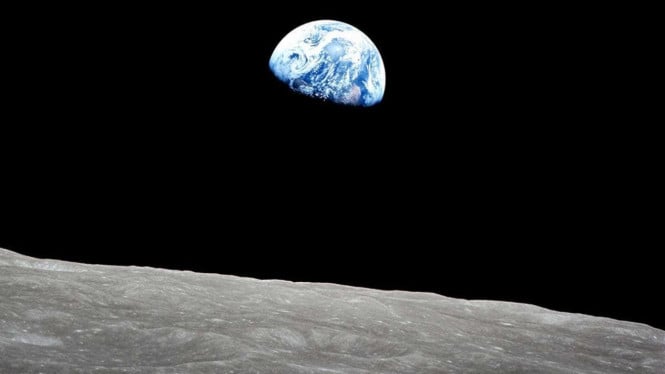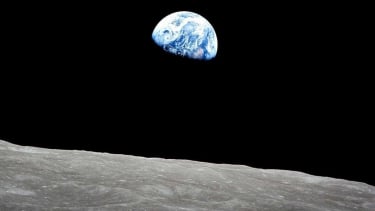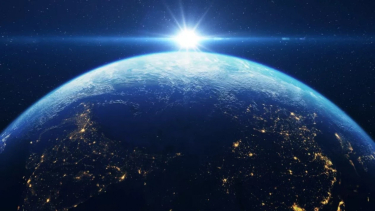- New Scientist
VIVA – In 1969, the Apollo mission installed reflective panels on the Moon. These have shown that moon is currently moving 3.8 cm away from the Earth every year. Looking at the current rate of lunar recession and projecting it into the past, Earth and Moon would have collided about 1.5 billion years ago.
But the Moon formed about 4.5 billion years ago, which means that the current rate of recession is a poor guide to the past, according to the Space website, Tuesday, October 18, 2022.
The University of Utrecht and the University of Geneva have used a combination of techniques to try and gain information about the solar system's past.
"We recently found the perfect place to uncover the long-term history of our Moon. And that's not from studying the Moon, but from reading signals in ancient rock layers that exist on Earth," Researchers stated.
Lapisan batuan putih, kemerahan dan abu-abu kebiruan di Karijini National Park
- Frits Hilgen
In the Karijini National Park in Western Australia, some gorges cut through 2.5-billion-year-old, rhythmically layered sediments. These sediments are banded iron formations, comprising distinctive layers of iron and silica-rich minerals once widely deposited on the ocean floor and now found on the oldest parts of the Earth’s crust.
Exposure to the cliffs at Joffre Falls shows how layers of reddish-brown iron formation less than one meter thick are periodically interspersed by darker and thinner horizons.
In 1972, Australian geologist AF Trendall raised questions about the origin of the different scales of the cyclical and repetitive patterns seen in these ancient rock layers. He said the pattern may be related to past variations in climate.
The Milankovitch cycles describe how small, periodic changes in the shape of the Earth’s orbit and the orientation of its axis influence the distribution of sunlight received by Earth over years.
Right now, the dominant Milankovitch cycles change every 400,000 years, 100,000 years, 41,000 years, and 21,000 years. These variations exert strong control over our climate over long periods.
Bumi dan Matahari yang dilihat dari luar angkasa.
- Getty Images
The Milankovitch cycle also influences the migration and evolution of flora and fauna, including our species. Signs of these changes can be read through cyclical changes in sedimentary rocks.
The distance between the Earth and the Moon is directly related to the frequency of one of the Milankovitch cycles, the cycle of climatic precession. This cycle arises from the motion of precession (wobble) or changes in the orientation of the Earth's axis of rotation over time.
The current cycle has a duration of 21,000 years, but this period would have been shorter in the past when the moon was closer to Earth.
"Our previous research showed that the Milankovitch cycle could be maintained in ancient iron formations in South Africa, thus supporting Trendall's theory," the researchers said.
Then, researchers used this precession signal to calculate the distance between Earth and the Moon at 2.46 billion years ago.
They found that the Moon was about 37,280 miles (60,000 kilometers) closer to Earth at the time (that distance is about 1.5 times the circumference of Earth). This would make the length of the day much shorter than it is now, roughly 17 hours instead of the current 24 hours.




























